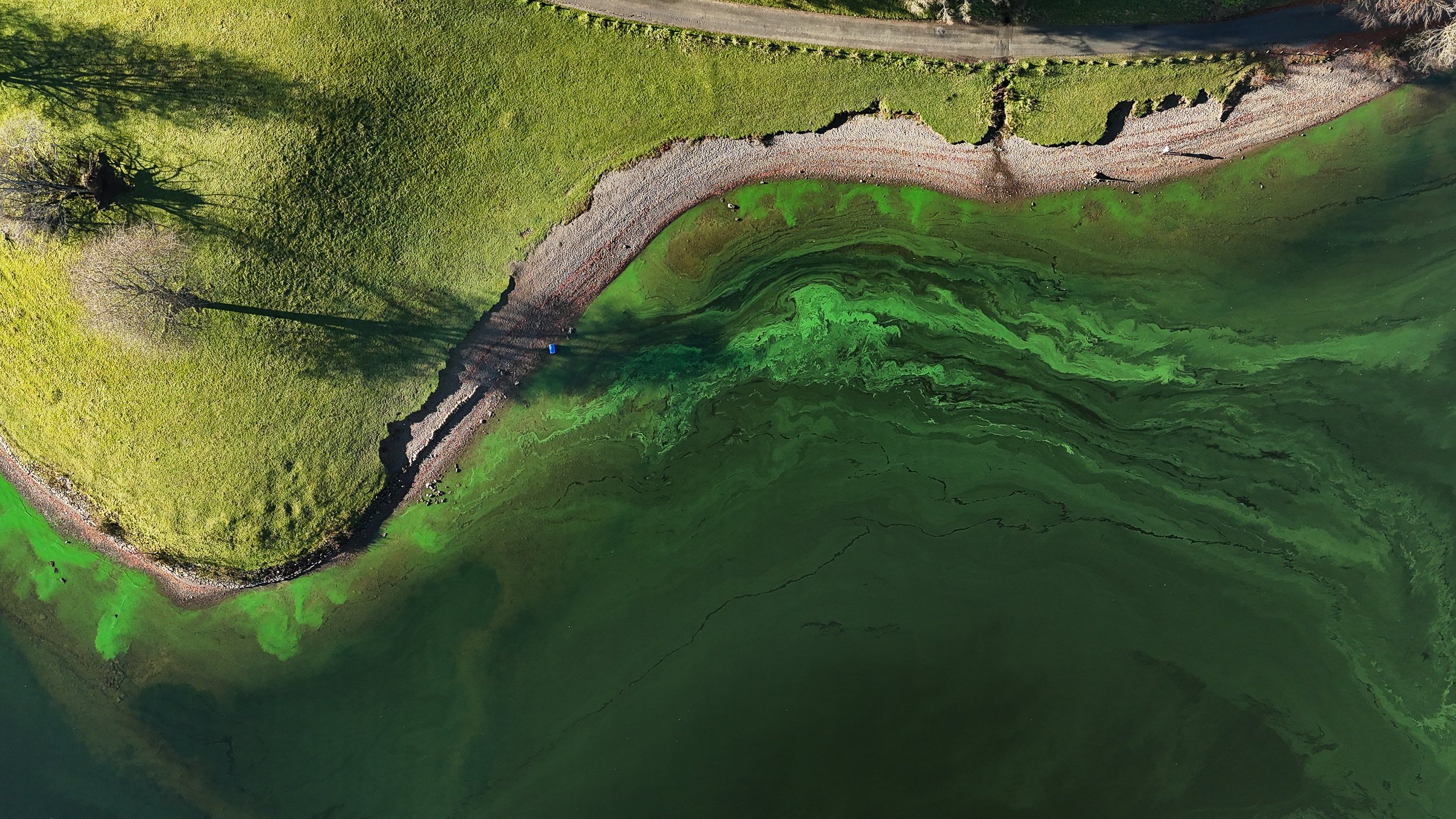
The Problem
Lake Windermere is dying
The Environment Agency, the Lake District National Park Authority and United Utilities have failed to manage excessive nutrients entering Windermere. Despite previous efforts to protect Windermere, the situation has not improved fast enough, and we do not believe the regulator is doing enough to hold the key polluter accountable. This is why we have launched a campaign to address the issue.
We understand that multiple factors have contributed to the lake's degradation, including climate change, septic tanks and farmland runoff. However, the discharge of sewage into the lake by United Utilities is by far the most significant contributor - tackling this issue first will allow us to have the greatest impact before it’s too late for Windermere.
Read on below to find out why Windermere is unique and why the only option is COMPLETE REMOVAL of ALL treated and untreated sewage discharges into the lake.
What is happening?
Sewage adds phosphorus
Phosphorus creates algal blooms
Blooms starve the lake of dissolved oxygen
If a bloom is severe enough, the lack of dissolved oxygen can kill the life within its water
Blooms explode in long daylight hours, warm temperatures, and when given excessive nutrients
United Utilities Untreated Sewage Spilling in Windermere
7236 hours
2020
Total spills
302 days
5837 hours
2021
Total spills
243 days
5905 hours
2022
Total spills
246 days
8787 hours
2023
Total spills
366 days
6327 hours
2024
Total spills
264 days
United Utilities & Windermere
United Utilities is the company responsible for managing the sewage and wastewater infrastructure in the Lake District, including the Windermere catchment area. Their operations have been identified as the single largest contributor of phosphorus into the lake, and they are the key focus of the Save Windermere campaign's efforts to protect our lake now and forever.
The water industry nationally has proven time and time again that they focus on profits and shareholder dividends over the protection of the environment.
United Utilities is one of the worst offenders.
United Utilities market capitalisation (2022)
£7B
United Utilities return to investors (2015-2020)
£1.6B
United Utilities investment in Windermere catchment (2015-2020)
£40M
United Utilities are aware of their impact on the lake
“
By removing all United Utilities discharges there still will be algal blooms, but their severity will be greatly reduced to the point where they may not actually be visible.
United Utilities, 2013
Over 10 years ago the decision was made not to invest in the removal of United Utilities discharges on the basis of cost. We must stop prioritising cost savings over the protection of the environment.
Why Windermere is Unique
Our Most Iconic Lake
UNESCO World Heritage Site, National Park, Area of Outstanding Natural Beauty and England’s largest lake.
Slow & Enclosed Ecosystem
Unlike our rivers and coasts, Windermere is an incredibly slow, enclosed system. It takes a single drop of water 9 months to go from the top of Windermere to the bottom. This means, over the years of mistreatment, a latent layer of sediment has built up at the bed of Windermere. This sediment is incredibly high in nutrient and with the right conditions, could come to the surface and cause the sudden ecological collapse of the lake.
Naturally Oligotrophic
In its natural state, Windermere is an oligotrophic lake. This means if you were to remove all human interference with the lake, it would be so low in nutrients that blooms would simply not occur. Algal blooms in Windermere result from unnatural inputs. By removing all sewage inputs into the lake, we could begin to rebalance the nutrient levels in the lake.
We Need To Act Now
The tipping point for Windermere will be defined by our climate. Our climate is changing and as a result our lake is warming.
The average annual surface temperature of Windermere has increased by 1.7°C in the last 70 years alone.
We are set to see more rainfall which is going to escalate sewage discharges.
We are going to see more droughts which allow the algal blooms to engulf Windermere.






